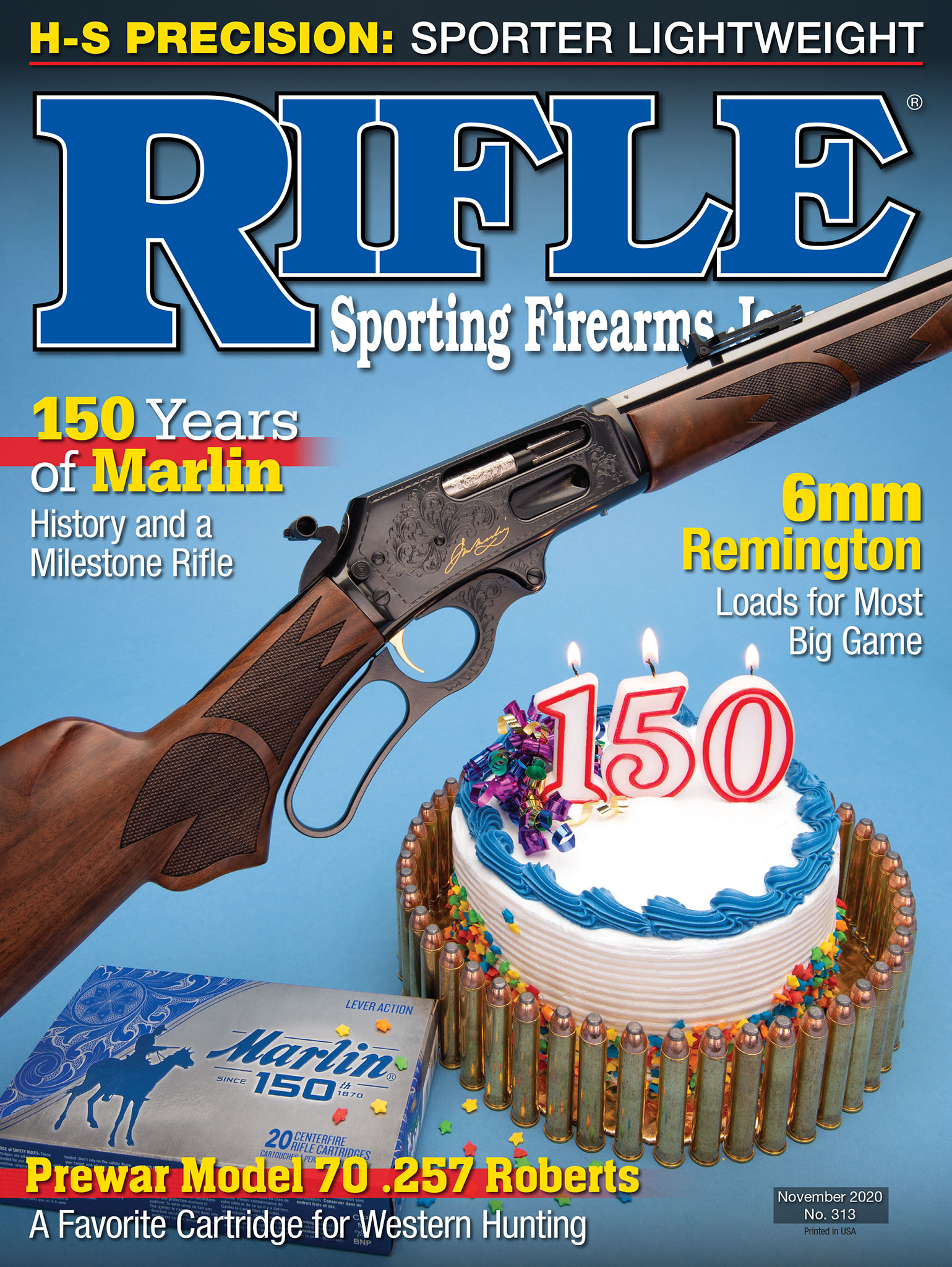That Fancy Rifle
Notes on the Subtle Art of Engraving
feature By: Terry Wieland | November, 20


Ironically, many of the finest rifles found in the world’s great museums today exist solely because they were so ornate. As a result, they were never actually used and subjected to the rough treatment of hunting and the corrosion of powder and priming.
If one were intent on beginning the story with the origins of engraving on guns, the trail would lead all the way back to prehistoric cave drawings of game animals, which led to the

This is getting slightly away from the original intent, which was to look at different types and purposes of engraving found on rifles, so let’s go back to that and see exactly what purposes appropriate engraving actually serves.
One, engraving can personalize a rifle, allowing someone to grab his off a rack and not pick up a similar one by mistake. A hanging tag would serve just as well, or your initials painted on the stock, but engraving is more enduring and attractive.
Two, engraving can identify the maker as well as the owner – a form of advertising, in a way.
Three, engraving on a flat metal surface breaks it up and minimizes glare and reflections, a valuable characteristic in both hunting and combat.
Four, fine engraving helps hold lubricant to prevent rust, and five, it can provide a more dependable grip on an otherwise slippery surface.
A sixth and seventh use of engraving is to embellish a gun intended as a gift, in order to flatter and gratify the ego of the recipient, or something similar intended to flatter and gratify the ego of the purchaser himself. It’s astonishing to what ends men went to flatter such as King Louis XIV or the Prince Regent in by-gone times (or, more recently, American presidents and Russian dictators) and to what ends they have gone in the last couple of decades to gratify themselves.


Such guns are usually referred to, snidely, in literature as “that fancy rifle.” In the old days of short fiction in Field & Stream, the rich guy with the expensive gun was invariably outshot by a farmer in coveralls with an ancient pump gun, or in deer camp by a kid with a rusty single shot. Such is the influence of inverse snobbery.
What I see as good taste in myself might be seen as snobbery by others, and that’s an argument that never ends. I have found, however, that this prejudice exists at all levels. The practical definition of a “gun snob” is anyone who has a gun that’s better than yours, whether you’re comparing single-shot .22s or Holland & Holland elephant rifles. The point of

Whoa, I almost forgot another use for engraving, which is to cover up poor quality in shoddily-made guns. A couple of hours’ worth of rudimentary engraving can effectively hide the lack of another 25 or 30 hours of skilled hand labor – at least until you try to shoot the thing. And, oh, yes, engraving also plays a big role in counterfeiting guns for sale to unsuspecting collectors.
Occasionally, a gunmaker will turn this on its head and produce a rifle with no engraving whatsoever except the name of the maker and essential information like caliber. This is to allow the buyer to see the extraordinary workmanship of the action and stock, unobscured by engraving. While interesting in principle, such guns are extremely rare. Fine as they are (or might have been), they generally don’t survive the vicissitudes of history and inheritance because the average person, confronted with a gun with engraving, assumes it is valuable and should be cherished, while one without engraving is treated like a garden tool. Thus a fine gun can be lost, while a second-rate one survives for all the wrong reasons.
Entire books have been written on the subject of engraving styles, tools, techniques and the names of some of the masters down through the centuries. It’s only in recent years, however, that master engravers have even started signing their work. This is a sure sign that in the nineteenth-century, engravers regarded themselves as craftsmen, no different than an actioner or stockmaker, doing a job for a fee, not as artistes to be fêted far and wide.
During the double-rifle mania from 1995 to 2010 (or thereabouts), both buyers and sellers went to great lengths to put names to the engraving on Jefferys or Rigbys from the 1890s. This went along with trying to turn

One of the engraving fads of that era was bulino, a method of imparting almost photographic quality to game scenes (and scenes more exotic) on actions and lock plates. Bulino uses dots of varying sizes, like the old “scan-a-graving” technique for reproducing photos in newspapers. The varying reflections and shadows thrown
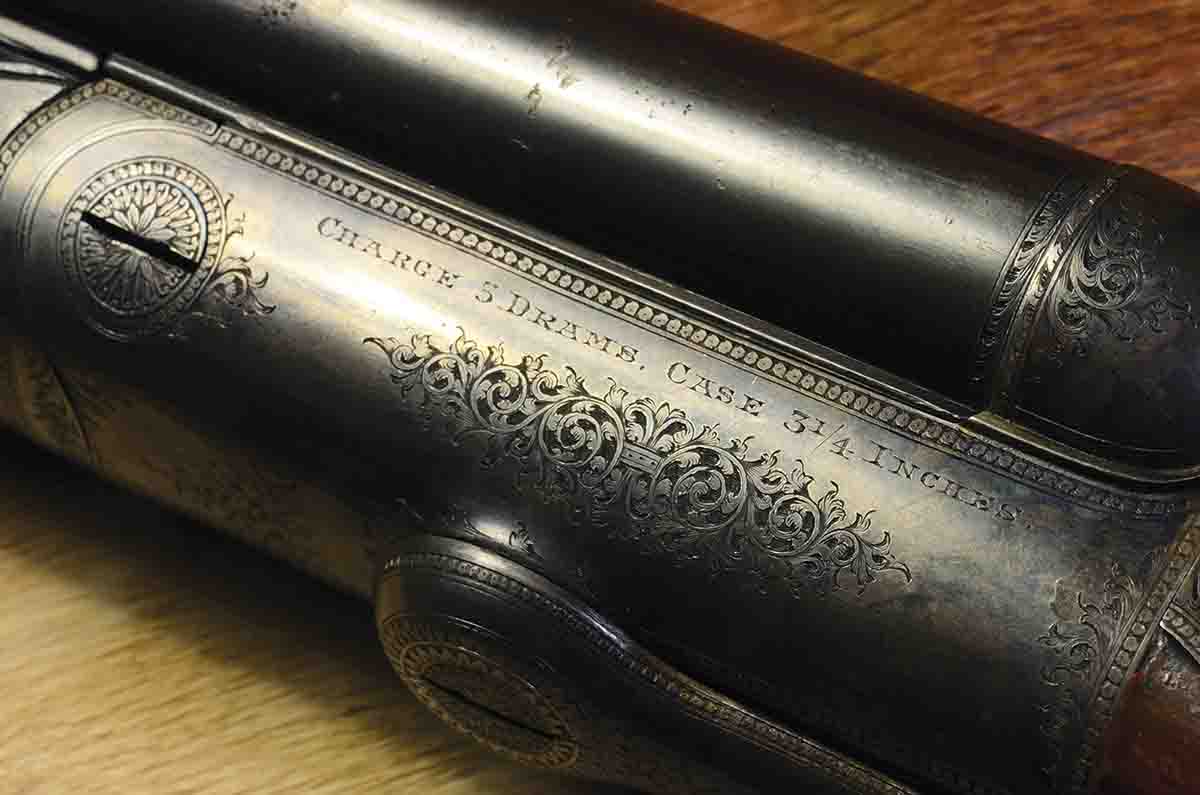
Bulino is largely a matter of taste (hate it, myself), but considered solely in terms of utility, it’s extremely poor embellishment for a working rifle. The main problem is that it’s as delicate as a photographic negative and will never again look as good as the day it comes out of the shop. Every scratch and ding will show, destroying the picture bit by bit. The owner, having paid some modern-day Cellini thousands for his work will either not dare to take the rifle hunting, or will be so worried about marring it that he won’t hunt properly, thereby fulfilling our definition of decadence as given above. The engraving will effectively interfere with the use of the rifle for its original purpose, psychologically at least. A bulino-engraved gun of any kind, after a bit of use, looks shopworn.
Traditional scroll engraving, on the other hand, actually looks better as it gets older – like a beautiful woman aging gracefully. Sharp, freshly-cut scroll never looks or feels as good as it does after a few years in the field, yet it always retains its utility. What’s more, if it sustains an egregious scratch, it can usually be repaired by a skilled engraver. This is not true of bulino; once it goes, it’s gone, unless you polish down to the bare metal and start over, and then you’re right back where you started, at great expense.
The subject of gold inlay hardly fits into this article, being a separate concern and intended solely for decoration, except in those cases where steel parts are gold-plated to prevent rust. Gold-inlaid animals and birds are attractive to some, garish to others. In recent years, as gunmakers have turned to machine engraving, it has become standard practice to inlay a few gold critters. Both the engraving and the inlay leave me cold.
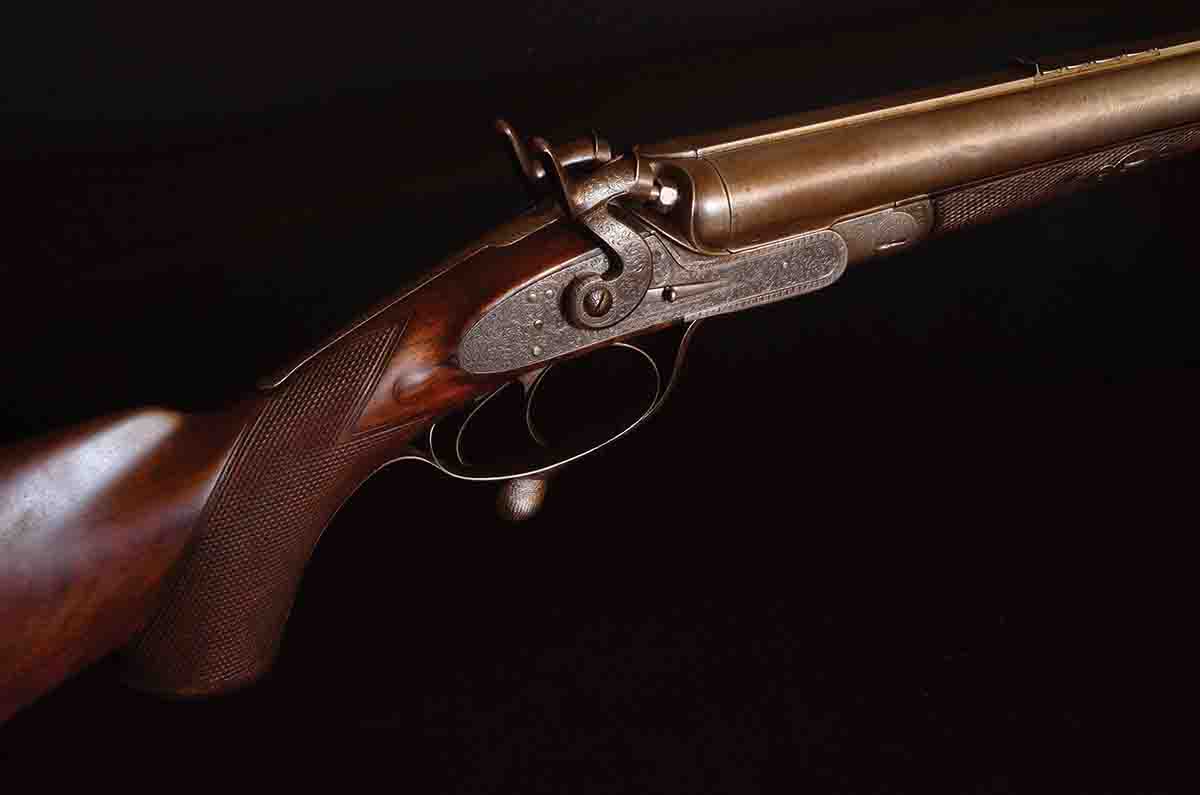
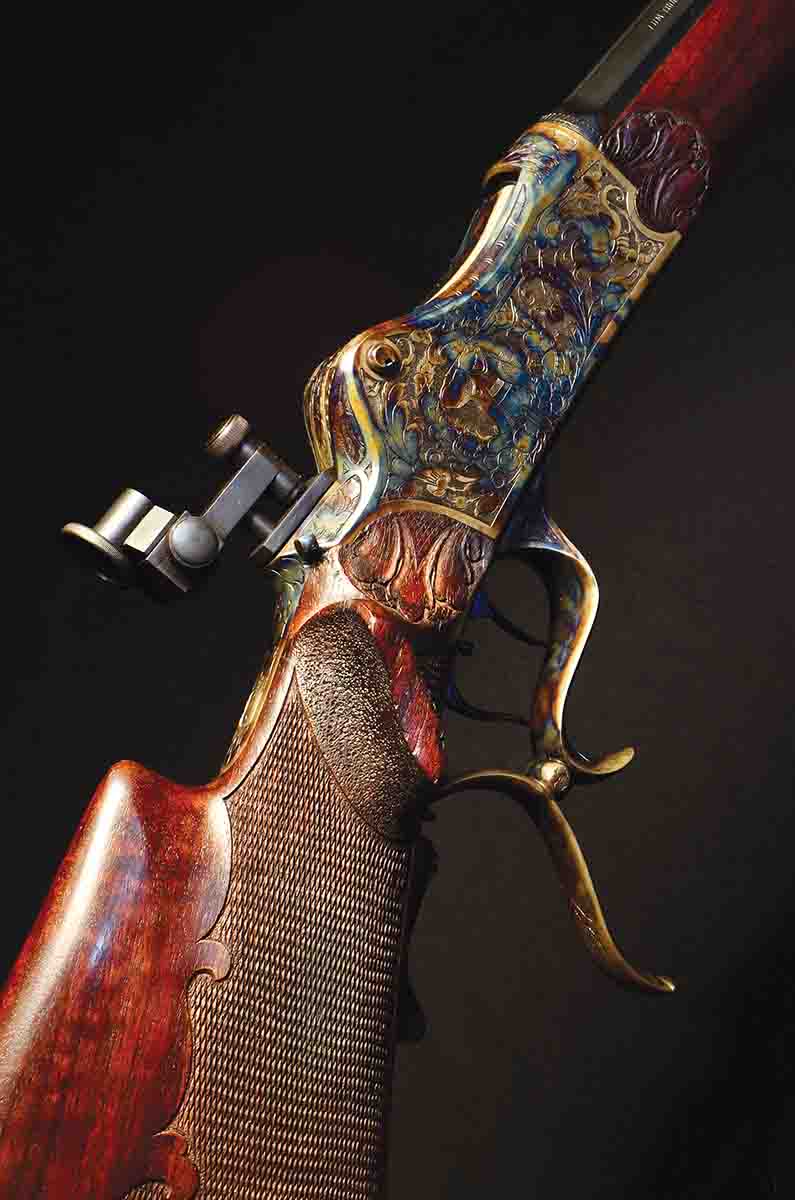
Ernest Hemingway once advised that, when you are stuck for an opening line, simply write the truest sentence you know at the time. So here goes: Engraving on rifles serves many purposes, most of them good, but it can also be a trap – and a very expensive trap at that.
More than any other feature on a rifle, with the occasional exception of extravagant walnut, engraving can make even the finest rifle decadent. By that, I mean decadent in one of the original definitions of the word: an object which becomes so ornate as to be unusable for its original purpose.
Ironically, many of the finest rifles found in the world’s great museums today exist solely because they were so ornate. As a result, they were never actually used and subjected to the rough treatment of hunting and the corrosion of powder and priming.
If one were intent on beginning the story with the origins of engraving on guns, the trail would lead all the way back to prehistoric cave drawings of game animals, which led to the ornamentation of spears and bows, and later swords and daggers and finally firearms. Engraving itself is intertwined with the creation of totems for individuals and
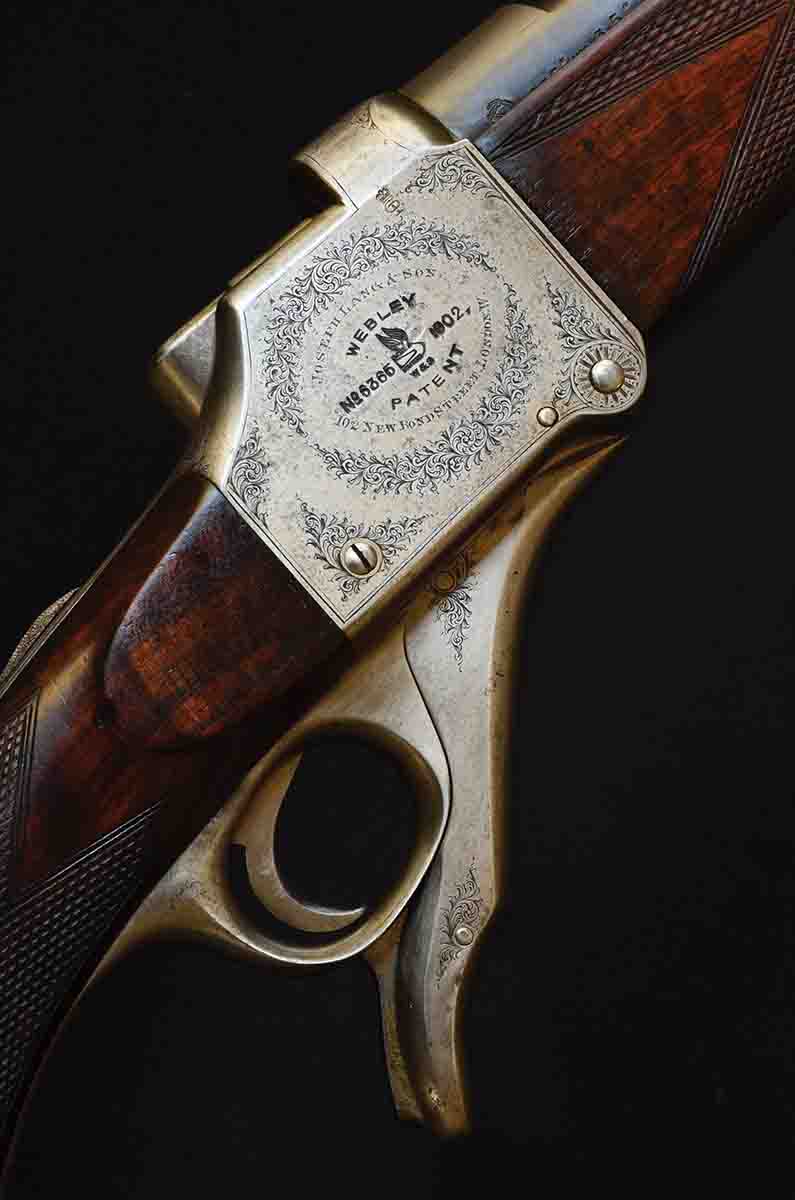
This is getting slightly away from the original intent, which was to look at different types and purposes of engraving found on rifles, so let’s go back to that and see exactly what purposes appropriate engraving actually serves.
One, engraving can personalize a rifle, allowing someone to grab his off a rack and not pick up a similar one by mistake. A hanging tag would serve just as well, or your initials painted on the stock, but engraving is more enduring and attractive.
Two, engraving can identify the maker as well as the owner – a form of advertising, in a way.
Three, engraving on a flat metal surface breaks it up and minimizes glare and reflections, a valuable characteristic in both hunting and combat.
Four, fine engraving helps hold lubricant to prevent rust, and five, it can provide a more dependable grip on an otherwise slippery surface.
A sixth and seventh use of engraving is to embellish a gun intended as a gift, in order to flatter and gratify the ego of the recipient, or something similar intended to flatter and gratify the ego of the purchaser himself. It’s astonishing to what ends men went to flatter such as King Louis XIV or the Prince Regent in by-gone times (or, more recently, American presidents and Russian dictators) and to what ends they have gone in the last couple of decades to gratify themselves.
Engraving is usually associated with custom guns from small shops, such as Gastinne Renette in Paris, or Purdey in London, but even American mass manufacturers made extensive use of engraving to differentiate higher grades of guns. Colt was the first major company to do it, but Winchester and Savage were noted for it as well. The purchase of a higher-grade gun sometimes demonstrated that the buyer was an afiçionado who appreciated fine things, but more often was intended to show his less well-heeled acquaintances that he could afford something better than they could.
Such guns are usually referred to, snidely, in literature as “that fancy rifle.” In the old days of short fiction in Field & Stream, the rich guy with the expensive gun was invariably outshot by a farmer in coveralls with an ancient pump gun, or in deer camp by a kid with a rusty single shot. Such is the influence of inverse snobbery.
What I see as good taste in myself might be seen as snobbery by others, and that’s an argument that never ends. I have found, however, that this prejudice exists at all levels. The practical definition of a “gun
snob” is anyone who has a gun that’s better than yours, whether you’re comparing single-shot .22s or Holland & Holland elephant rifles. The point of difference is often the engraving or lack thereof, not the intrinsic quality of the gun itself.
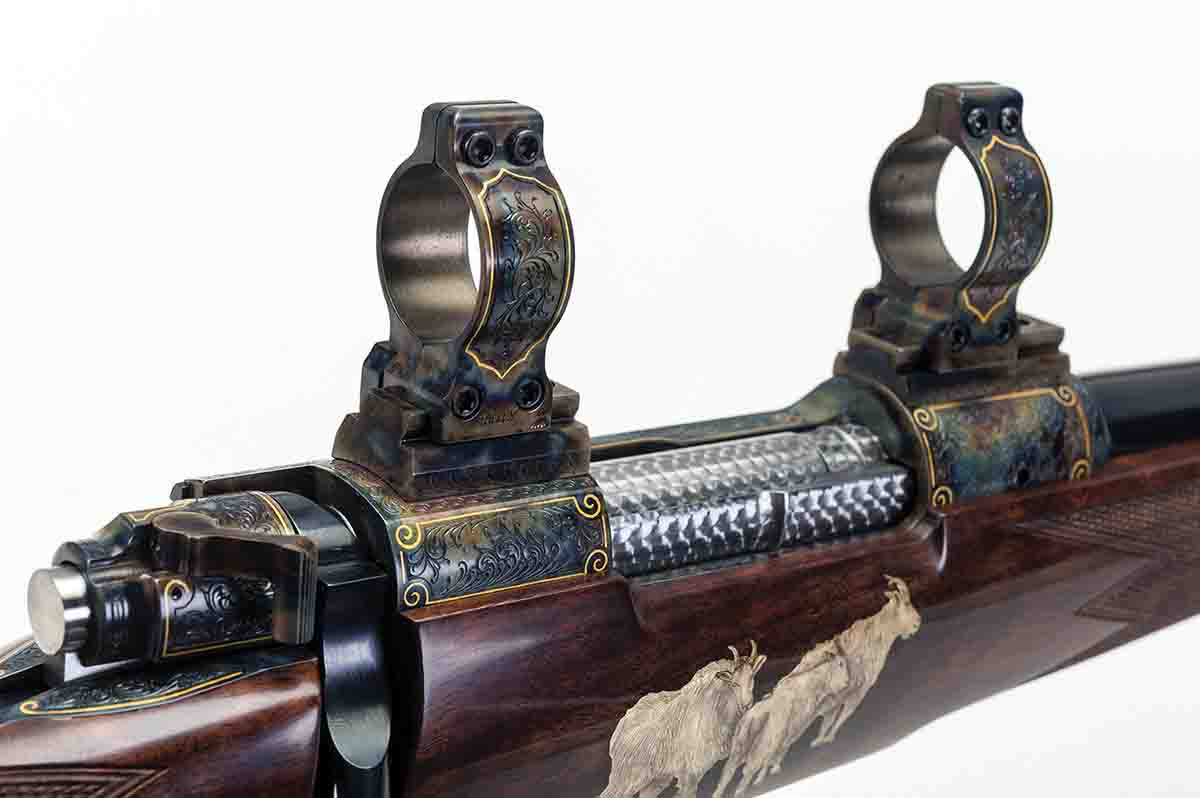
Occasionally, a gunmaker will turn this on its head and produce a rifle with no engraving whatsoever except the name of the maker and essential information like caliber. This is to allow the buyer to see the extraordinary workmanship of the action and stock, unobscured by engraving. While interesting in principle, such guns are extremely rare. Fine as they are (or might have been), they generally don’t survive the vicissitudes of history and inheritance because the average person, confronted with a gun with engraving, assumes it is valuable and should be cherished, while one without engraving is treated like a garden tool. Thus a fine gun can be lost, while a second-rate one survives for all the wrong reasons.
Entire books have been written on the subject of engraving styles, tools, techniques and the names of some of the masters down through the centuries. It’s only in recent years, however, that master engravers have even started signing their work. This is a sure sign that in the nineteenth-century, engravers regarded themselves as craftsmen, no different than an actioner or stockmaker, doing a job for a fee, not as artistes to be fêted far and wide.
During the double-rifle mania from 1995 to 2010 (or thereabouts), both buyers and sellers went to great lengths to put names to the engraving on Jefferys or Rigbys from the 1890s. This went along with trying to turn some English, Belgian and Italian engravers into celebrities, along with American members of the engravers’ guild. It did not seem to take. In 2001, having a gun made in Spain, I asked the engraver to sign his name on the inside of a lockplate. He did it, but I think he considered me mad. He had shown me some of his paintings and drawings, which were beautiful. “This is art,” he said in Basque. “This other – it’s only engraving.”
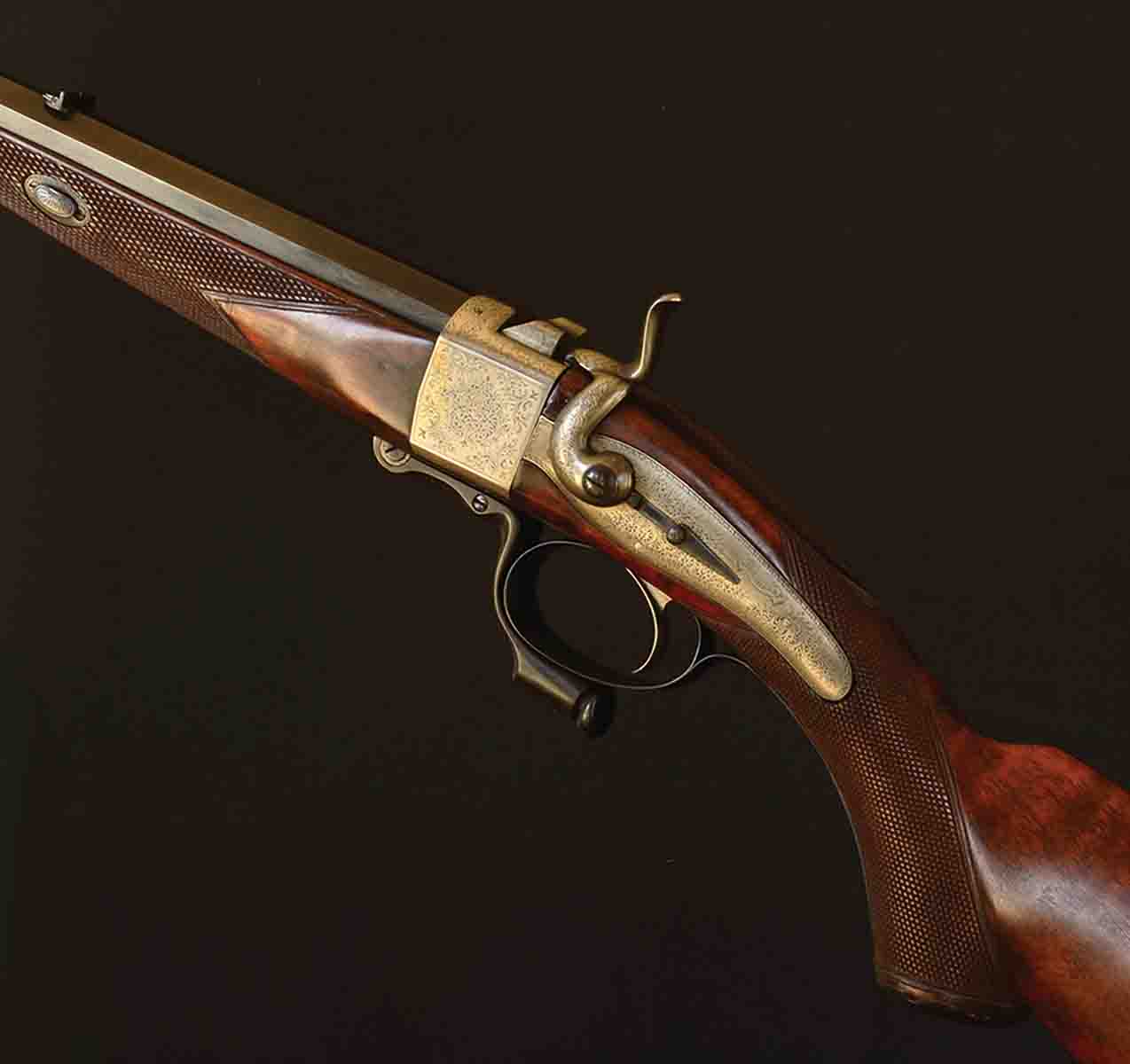
Bulino is largely a matter of taste (hate it, myself), but considered solely in terms of utility, it’s extremely poor embellishment for a working rifle. The main problem is that it’s as delicate as a photographic negative and will never again look as good as the day it comes out of the shop. Every scratch and ding will show, destroying the picture bit by bit. The owner, having paid some modern-day Cellini thousands for his work will either not dare to take the rifle hunting, or will be so worried about marring it that he won’t hunt properly, thereby fulfilling our definition of decadence as given above. The engraving will effectively interfere with the use of the rifle for its original purpose, psychologically at least. A bulino-engraved gun of any kind, after a bit of use, looks shopworn.
Traditional scroll engraving, on the other hand, actually looks better as it gets older – like a beautiful woman aging gracefully. Sharp, freshly-cut scroll never looks or feels as good as it does after a few years in the field, yet it always retains its utility. What’s more, if it sustains an egregious scratch, it can usually be repaired by a skilled engraver. This is not true of bulino; once it goes, it’s gone, unless you polish down to the bare metal and start over, and then you’re right back where you started, at great expense.
The subject of gold inlay hardly fits into this article, being a separate concern and intended solely for decoration, except in those cases where steel parts are gold-plated to prevent rust. Gold-inlaid animals and birds are attractive to some, garish to others. In recent years, as gunmakers have turned to machine engraving, it has become standard practice to inlay a few gold critters. Both the engraving and the inlay leave me cold.
One of the magical effects of fine old engraving is imagining the man who did it, what he was like, what he was thinking as he turned the piece in his vise and tapped out each minuscule curl of steel. It’s hard to try to connect emotionally with a CNC machine, and the very perfection – “Every scroll is identical!” they squeal – makes it unutterably boring. It cannot properly even be called engraving; it’s simply machined embellishment, and generally uninspired embellishment at that.
As carbon steel and fine walnut are increasingly replaced by alloys and plastics, engraving as a common feature on production rifles has all but disappeared, and that trend is unlikely to be reversed. Eventually, engraving may come to be regarded in the same way we now look at the great stained glass windows in cathedrals, or the extraordinary stone masonry of palaces. The artisans’ names may be lost to history, and their skills with them, but their creations remain to be marveled at. And that is no small thing.


